Berry Picking around Aa-Gård
Lavangen’s BERRY FLAVORS
Although the Norwegian winter can be very cold and snowy, nature is warm and giving during the summer and autumn months: from June to September Norwegian forests transform into heavens for the berry picking enthusiast! These delicious treasures such as wild strawberries, blueberries, raspberries, cloudberries, and so on, can be handpicked in almost every corner of Northern Norway.
Norwegian people love outdoor activities, including walking long walks in the mountains and forests. So when you happen to be in Norway, why not try to adapt to the local people and habits. Bring a bucket during berry picking walks and you will blend perfectly, like a true Norwegian.
Aa-Gård’s restaurant is using only locally source products, and berry are on of our favourite ingredient: either as a liquor, a jam to eat with lamb or reindeer meat, or among a few traditional dessert.
In late Summer and Autumn, many of our guests are going berry picking around Aa-Gård, and they have been very nice to share their knowledge! Here is a list of what berry they found, in what kind of soil and the best period to find them. Good luck and wishing you too a tasty berry picking adventure!
Raspberry
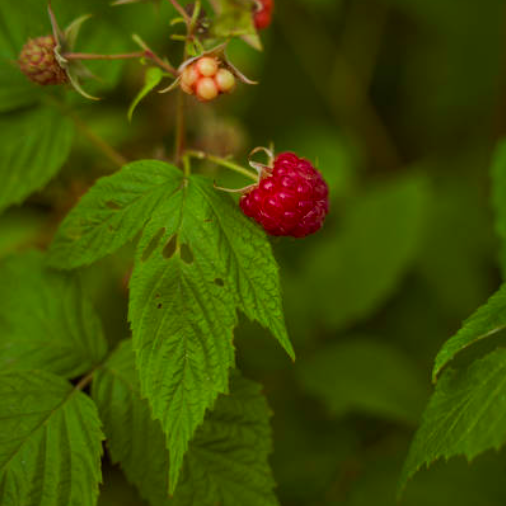
Name: Raspberry
Norwegian name: Bringebær
Scientific name: Rubus idaeus
Where to find them?: On the edges of forests and in fields. Dry, rocky places.
Season: Mid-July to August
The healthy fruits healthy are often consumed raw or used in a variety of ways in the kitchen, for example as jam, jelly, compote, juice, cake topping, cold bowl or fruit groats.
The dried (young) leaves can be used for teas and the fresh leave sprouts can even be eaten raw in salads. Similar to its reltive the blackberry, raspberry leave tea is used in folk medicine.
Juniper Berry
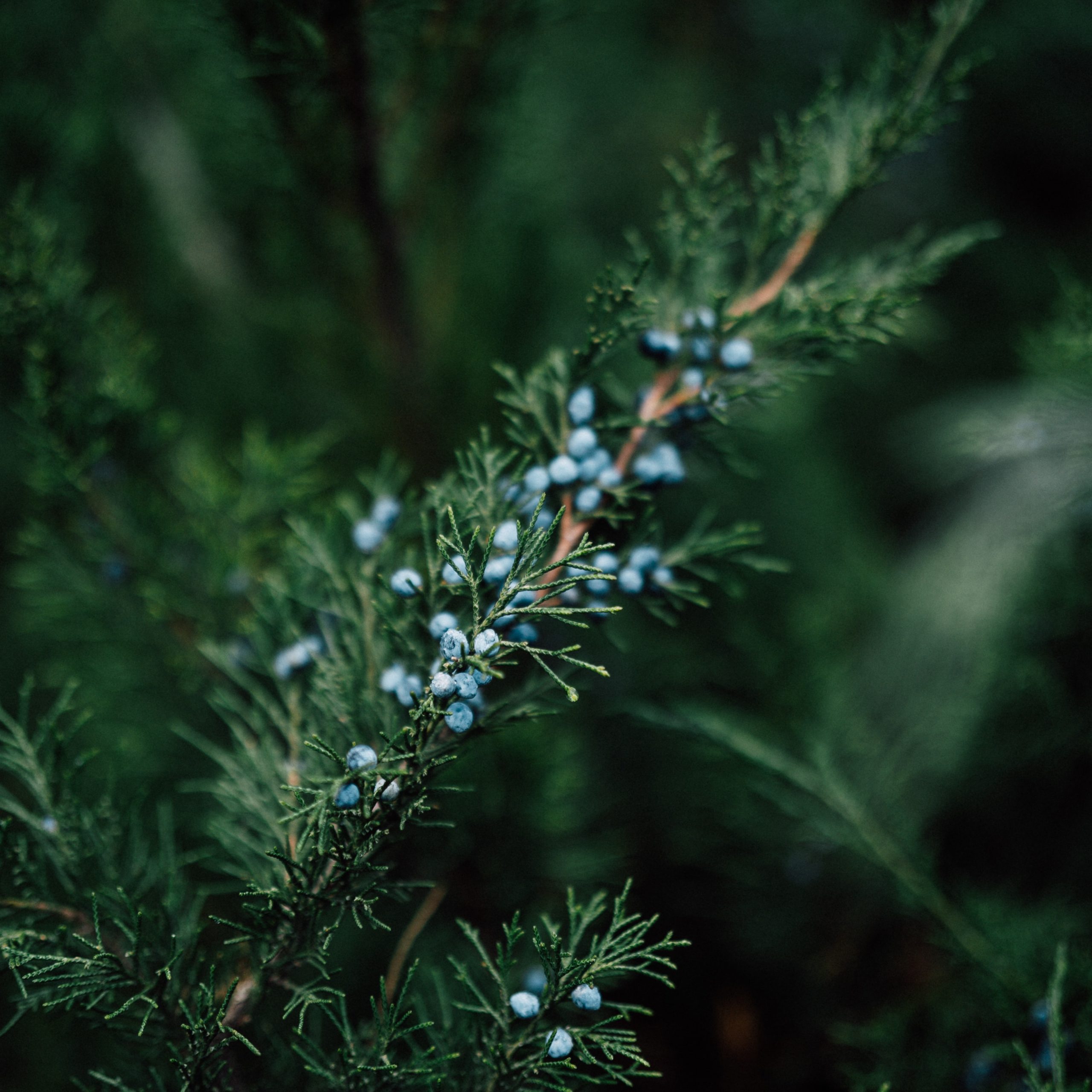
Name: Juniper Berry
Norwegian name: Enbär
Scientific name: Juniperus communis
Where to find them?: In and around pine forests
Season: September to October
Juniper grows widely across Norway. Surprisingly a juniper berry is not a berry but a seed: a blue-black fleshy cone from a juniper plant, like on conifers. The ‘berries’ are on the female plants. The dried berries are used in stews, sauces, herring dishes and as a way to flavour liquor. The tree itself is deeply rooted into folklore, with some being considered sacred. The bark and berries were used in medicine and to protect against evil. It was also thought that by giving the berries to the lambs before they would graze freely in the summer would keep the foxes away.
Wild Strawberry
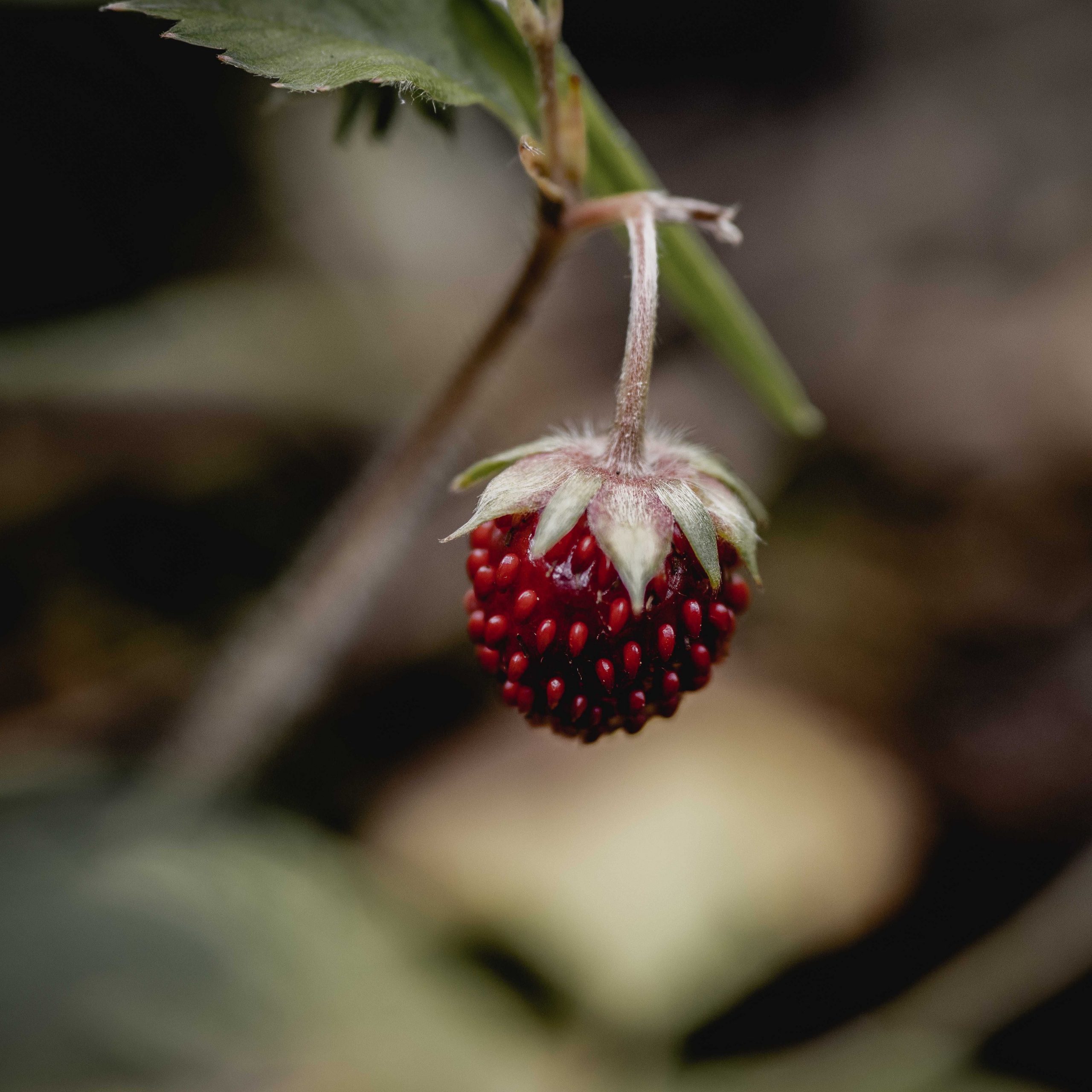
Name: Wild Strawberry
Norwegian name: Markjordbær
Scientific name: Fragaria vesca
Where to find them?: In forests
Season: Early June till July
The plants are 5-20 cm high and form little white flowers before fruiting which results in small, berry-sized, sweet strawberries that you can pick right off the bush. They spread through new offshoots along the ground, forming clusters that multiply easily.
These small strawberry plants are found on meadows, dry slopes, and in herbaceous forests, mostly on slightly nutritious soil. Sometimes you come across them along the roadside. While sweet and tasty, they are not as numerous as other berries on this list, but they are sure worth a taste if you come across them.
Red Currant
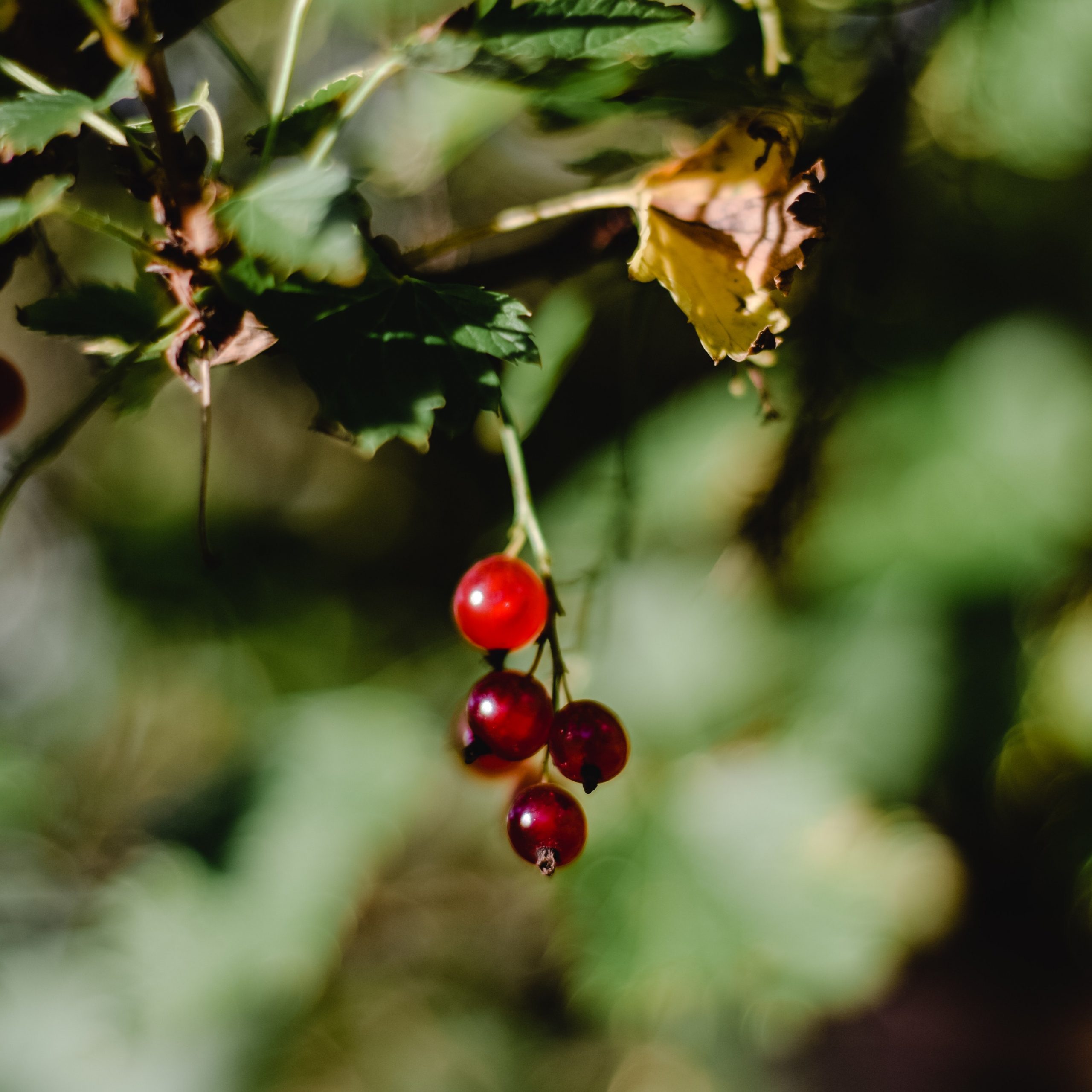
Name: Red Currant
Norwegian name: Röda vinbär
Scientific name: Ribes rubrum
Where to find them?: Woodlands and beaches
Season: July to August
Norwegians praise these berries for their healing properties. Today they are primarily used in the wine and liqueur industry and also for making juices or jams. Only a small percentage of the harvest is consumed fresh. The strong flavors of the berries make for perfect dessert toppings. Though red and black currants are native to Norway, they are rarely found in the wild, and principally grow only in private gardens. The berries come in season in late September.
Black Currant
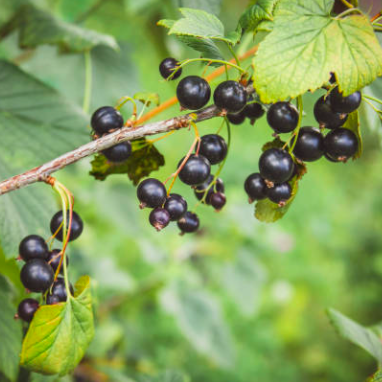
Name: Black Currant
Norwegian name: Svarta vinbär
Scientific name: Ribes nigrum
Where to find them?: Woodlands and beaches
Season: July to August
Black currants are small, dark berries that grow in clusters and have a complex flavor. They’re tart yet sweet, rich and earthy, and unlike any other fruit. They can be eaten raw but are typically enjoyed as preserves, syrups or juices.
Blackcurrant varieties are now widely cultivated both commercially and in home gardens
The wild ones grow in stream side and seaside thickets, riverbanks, scrub and wet forests with damp and fertile soils.
Lingonberry
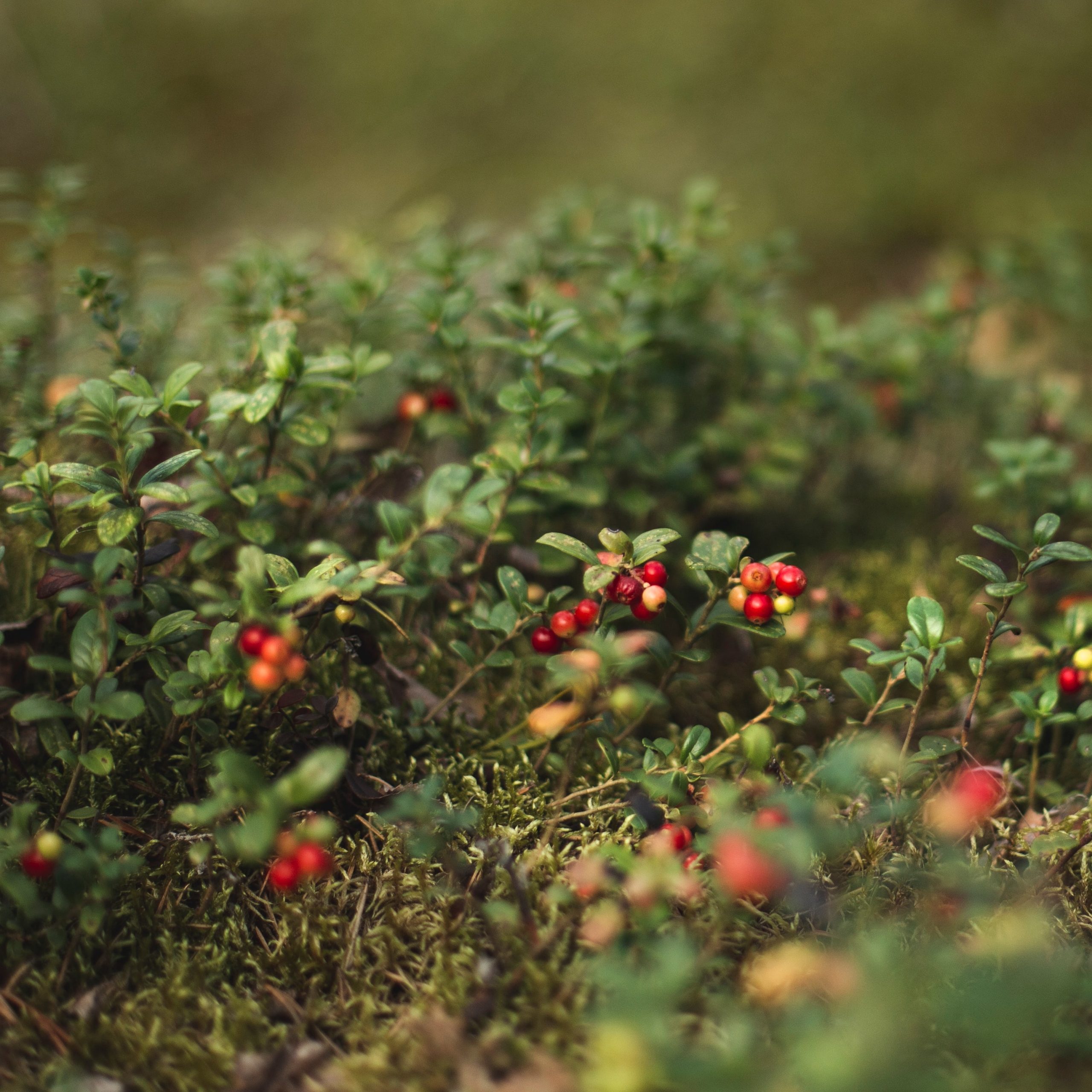
Name: Lingonberry
Norwegian name: Tyttebær
Scientific name: Vaccinium vitis-idaea
Where to find them?: Forests and moorlands
Season: Late-July to September
The small berries are very popular in the Scandinavian kitchen. The berries are generally boiled and sugared before being eaten as jam, juice, compote or jelly. They can also be served raw, crushed and mixed with sugar.
Jams are usually served along with meat dishes as meat balls or deer, reindeer or elk meat, especially popular during Christmas time.
Rowan Berry
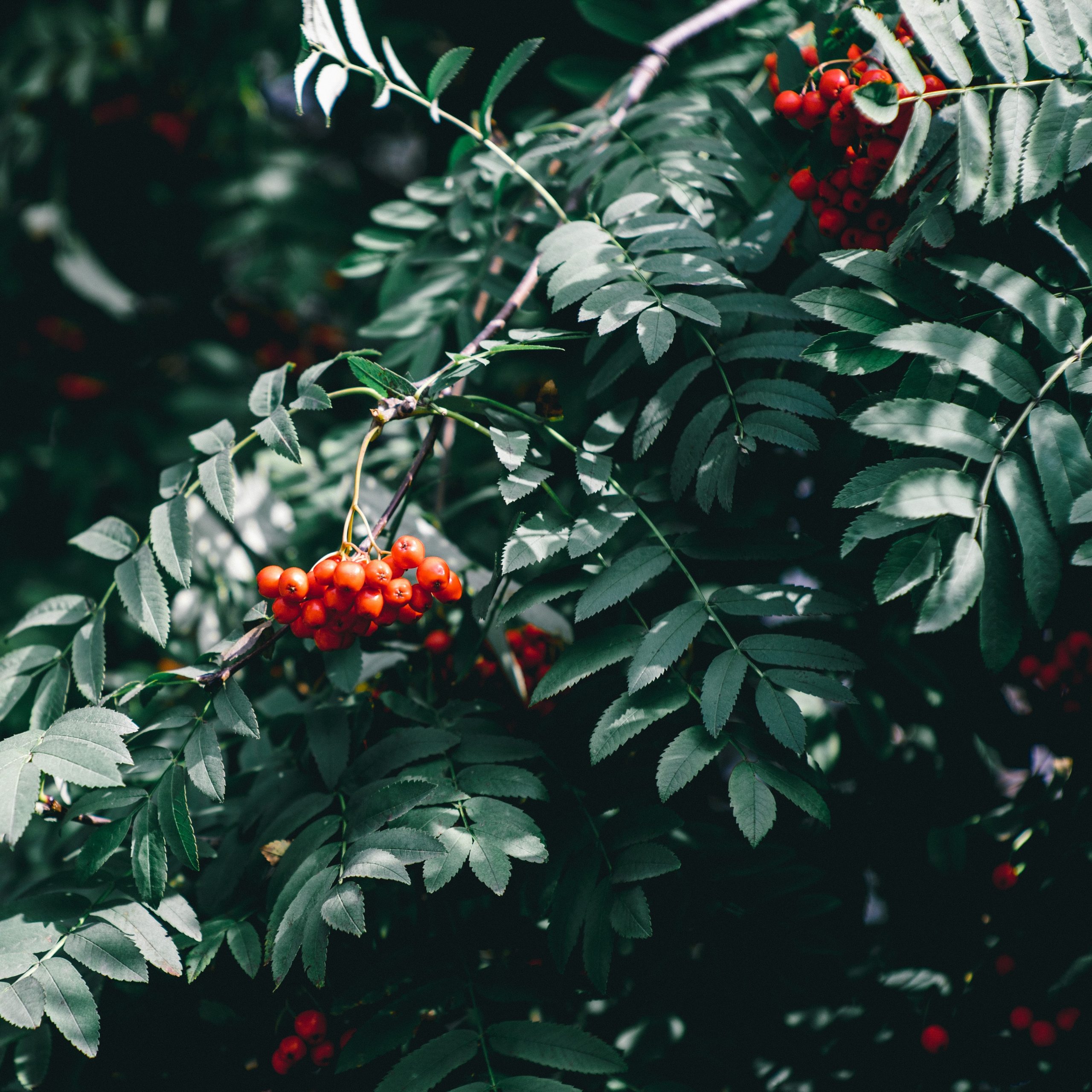
Name: Rowan Berry
Norwegian name: Rönnbär
Scientific name: Sorbus aucuparia
Where to find them?: Everywhere!
Season: August to September
Technically a pome (think apple or avocado), rowan berries are a curious little red fruit. They’re extremely sour and not particularly edible when raw, but have a much sweeter taste if harvested after a frost. Then, they can be used in a range of recipes. Traditionally, they were utilized in combatting scurvy and today you’ll usually find them sweetened in preserves and strong brandywines.
Bilberry
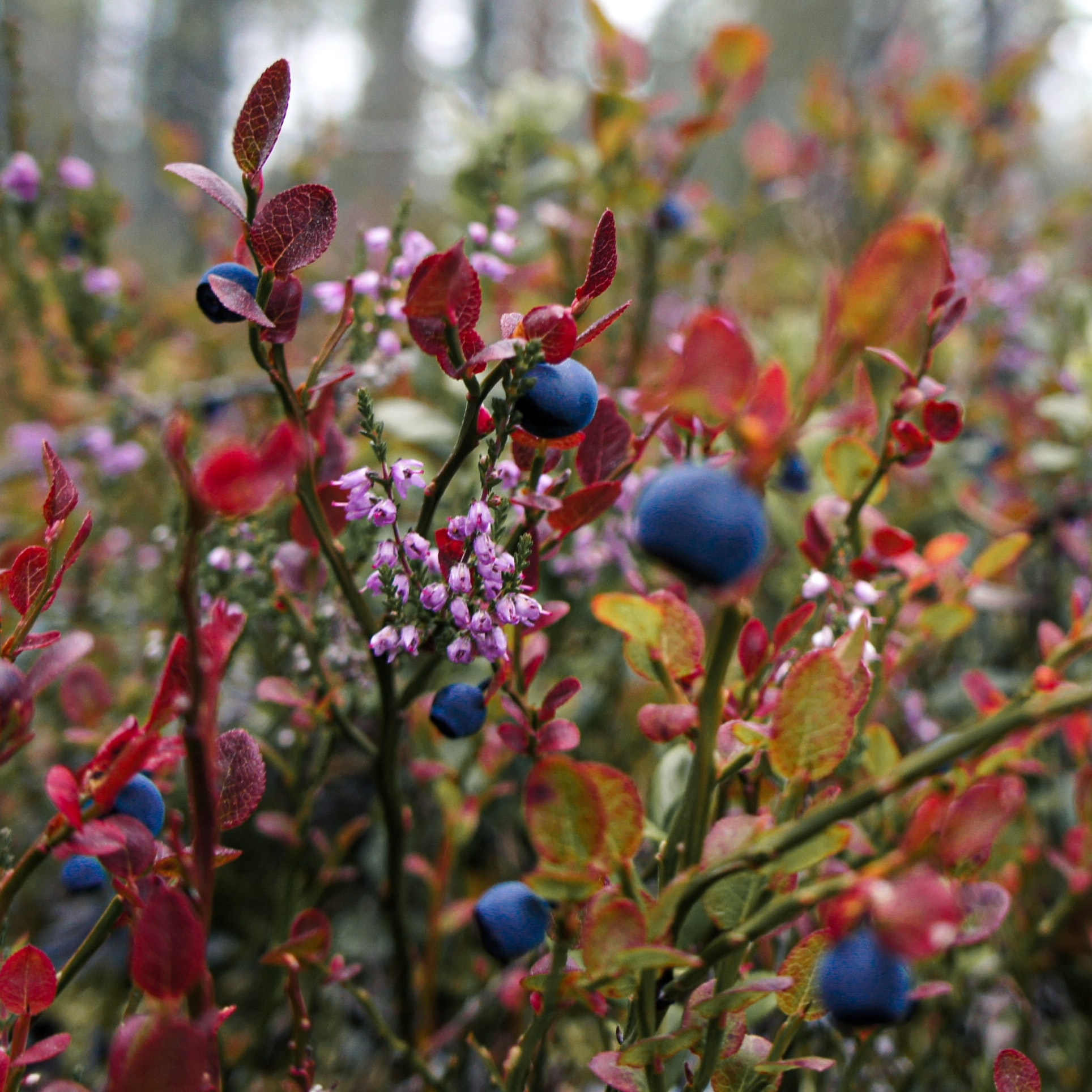
Name: Bilberry
Norwegian name: Blåbär
Scientific name: Vaccinium myrtillus
Where to find them?: Everywhere
Season: Mid-July to late-August
Also known as European blueberries, Norwegian blåbär is the most abundant berry in Norway. They’re not the same as their North American counterparts; bilberries are slightly smaller, have less sugar and are a deep crimson color inside.
Bilberries can be handpicked straight off the bush, however, If you want to speed up the picking process, you should get a berry picker. This will enable you to pick a full bucket in no time, which is more than enough to make delicious wild blueberry jam to enjoy on your pancakes the next morning
Cloudberries
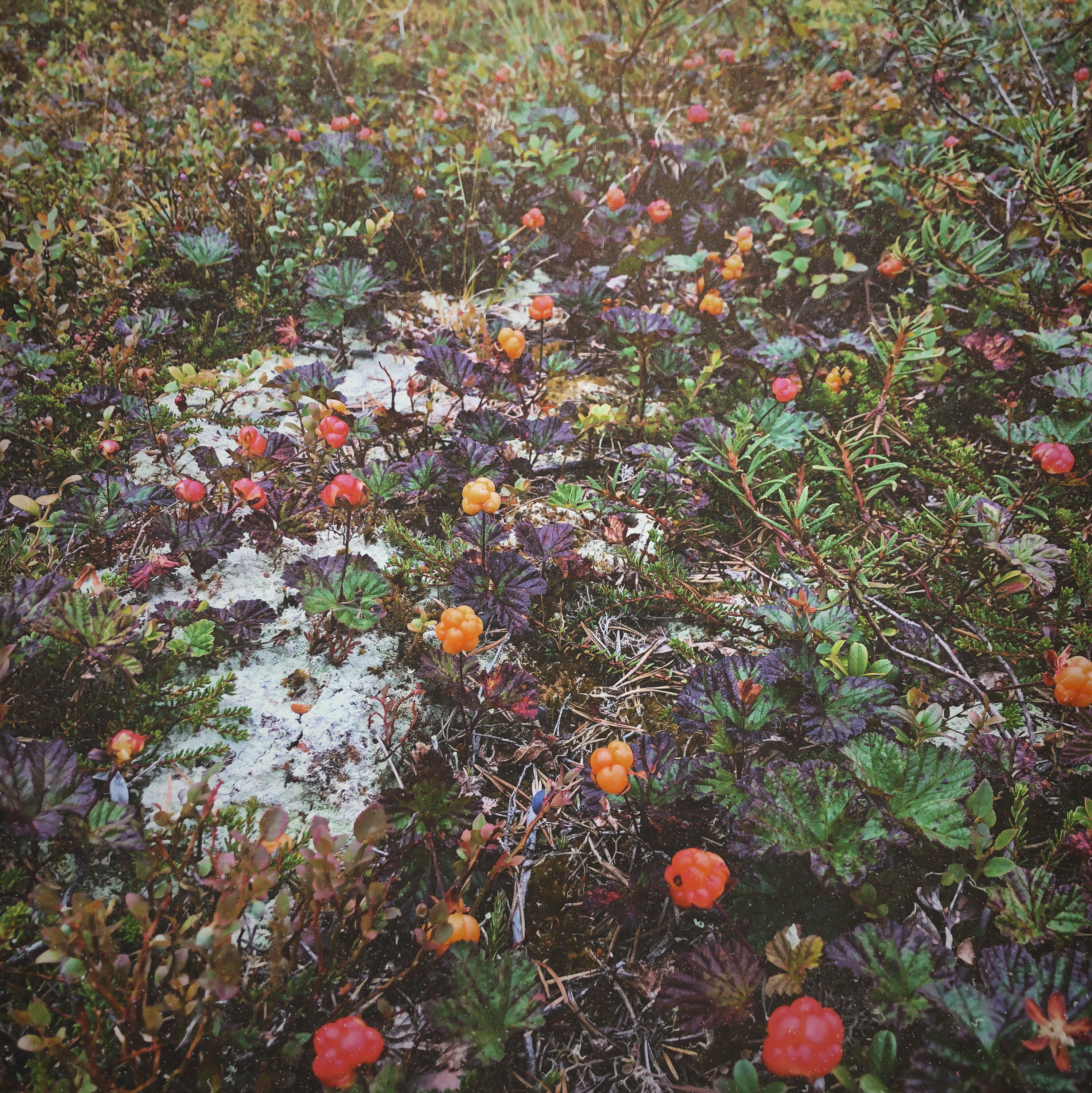
Name: Cloudberries
Norwegian name: Multebær
Scientific name: Rubus chamaemorus
Where to find them?: Mountainous bogs
Season: July to mid-August
Cloudberries look like small orange raspberries, and are often called “Mountain Gold” due to their golden skin and expensive price-tag. They grow in mountainous areas spanning from from mid-Norway/ Sweden/ Finland all the way up north towards the Arctic. They are notoriously fussy and a good cloudberry season depends on many, many factors. A typical Norwegian Christmas-dessert is cloudberry whipped cream piped into “krumkaker”; a light, crisp waffle shaped into a cone. Cloudberries are considered a Norwegian delicacy, and if you are lucky enough to come across them during a hike or trek, make sure you try them for yourself.
Blackberry
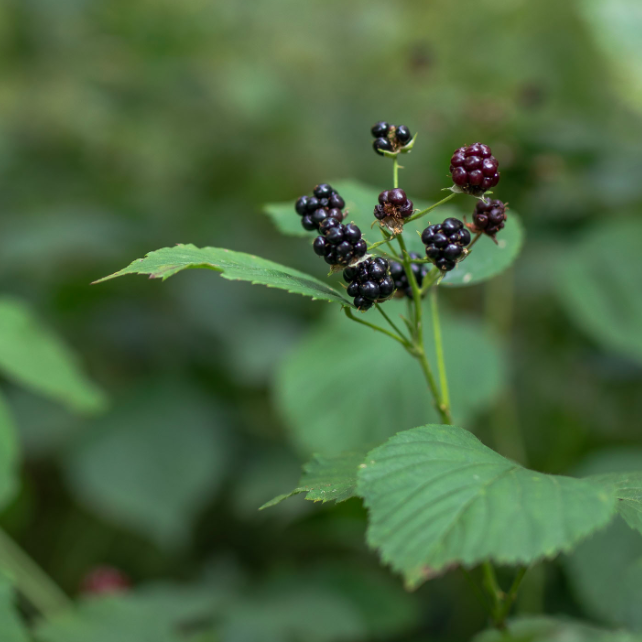
Name: Blackberry
Norwegian name: Bjørnbær
Scientific name: Rubus fruticosus
Where to find them?:Dry, rocky places, Southern & Central Norway
Season: August to October
Blackberries are eaten fresh or used in the kitchen to prepare numerous dishes, including jams, jellies, red fruit jelly, sorbets, fruit juice, wine and liqueurs, cakes and tarts and other desserts. Only 6 out of 40 blackberries species in Norway grow in farmers’ gardens, while the other 34 species can be found only in the wild. Unlike most Arctic berries growing in the Northern regions of Norway, blackberries are used to warm climates and thus they prevail in the Southern areas. Moreover, blackberries have a longer harvest season than the rest of berries, they ripen from August to October.